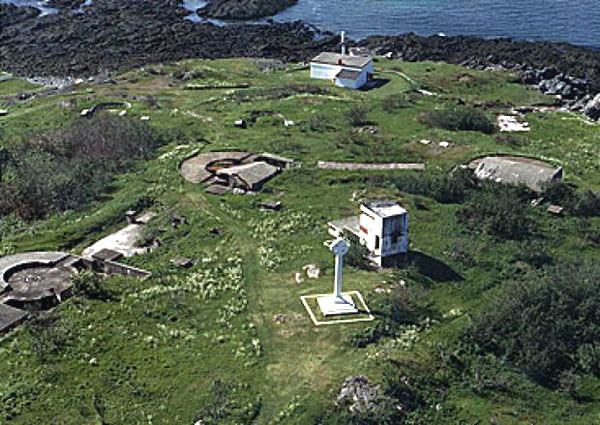Province New Brunswick | ||
 | ||
Similar Carleton Martello Tower, Fort Howe, Reversing Falls, Loyalist House, Irving Nature Park | ||
Partridge Island is a Canadian island located in the Bay of Fundy off the coast of New Brunswick within the city of Saint John's Inner Harbour.
Contents
Map of Partridge Island, Saint John, NB, Canada
The island is a provincial historic site and was designated a National Historic Site of Canada in 1974. It lies on the west side of the mouth of the Saint John River
Partridge Island was first established as a quarantine station and pest house in 1785 by the Saint John Royal Charter, which also set aside the island for use as a navigational aids station and a military post. Its first use as a Quarantine Station was not until 1816. A hospital was constructed on the island in 1830.
It received its largest influx of immigrants in the 1840s during the Great Famine, known as the "Irish Potato Famine", when a shortage of potatoes occurred because of potato blight striking Ireland's staple crop, causing millions to starve to death or otherwise emigrate, mainly to North America. During the famine, some 30,000 immigrants were processed by the island's visiting and resident physicians, with 1196 dying at Partridge Island and the adjacent city of Saint John during the Typhus epidemic of 1847. During the 1890s there were over 78,000 immigrants a year being examined or treated on the island.
A memorial to the Irish immigrants of the mid-1840s was set up on the island in the 1890s but by World War One it had deteriorated. In 1926 the Saint John City Cornet Band approached Saint John contractor George McArthur who agreed to lead a campaign to build a suitable monument. The Celtic Cross memorial to the Irish dead of 1847 was dedicated in 1927. This was restored and rededicated in 1985. In the early and mid-1980s the Saint John Jewish Community, the Loyal Orange Lodge, the Partridge Island Research Project (Harod E. Wright), and the Partridge Island & Harbour Heritage Inc., a company that was registered in 1988 and dissolved in 2004 erected memorials to the Protestant, Catholic and Jewish immigrants buried in one of the six island graveyards, as well as a monument to all of the Irish dead from 1830 to the 1920s.
HistoryEdit
The island traces its human history to the Passamaquoddy Nation and particularly the Mi'kmaq Nation, who reportedly referred to the island as "Quak'm'kagan'ik" meaning "a piece cut out". This name is in reference to the belief that the island was created when Glooscap smashed the dam that "Big Beaver" had built (at the Reversing Falls) and a piece of the dam was swept in the rush of water to the mouth of the harbour where it came to rest to form the island. (The same legend has been told about an island in Minas Basin in Nova Scotia, which is also now called Partridge Island.)
Following the arrival of United Empire Loyalist refugees from the American Revolutionary War in 1783, and the formation of the city of Saint John, the need for a lighthouse to aid shipping was realized. A light station was erected on Partridge Island and began operating in 1791, being only the third light station to have been built in British North America. A signal station was soon located on the island and it was used for many years to alert the harbour to vessels approaching from the Bay of Fundy. The island's light and signal station were both established in 1791. The modern equivalent of the signal station, still exists on the island in 2011.
The island was Saint John's principal military fortification from 1800 until 1947. It was the only Saint John fortification to be used during all periods of Saint John's military activity. On the island today are visible the remains of the Royal Artillery gun battery of 1812, and of both World Wars One and Two.
The island was also home to dozens of island families over the years, from lightkeepers such as Captain Samuel Duffy, James Wilson, Albert Smith, Charles Mitchell and, Thomas Furness, to hospital staff such as Doctors George and William Harding, hospital stewards Thomas McGowan, Fred and Jim Hargrove, and teachers for the island's school such as Jean MacCullum and Forbes Elliott.
Boat tours operated to the island from 1982 until 1995 when the island's small museum closed. There have been numerous books written about the island as well as video documentaries.
